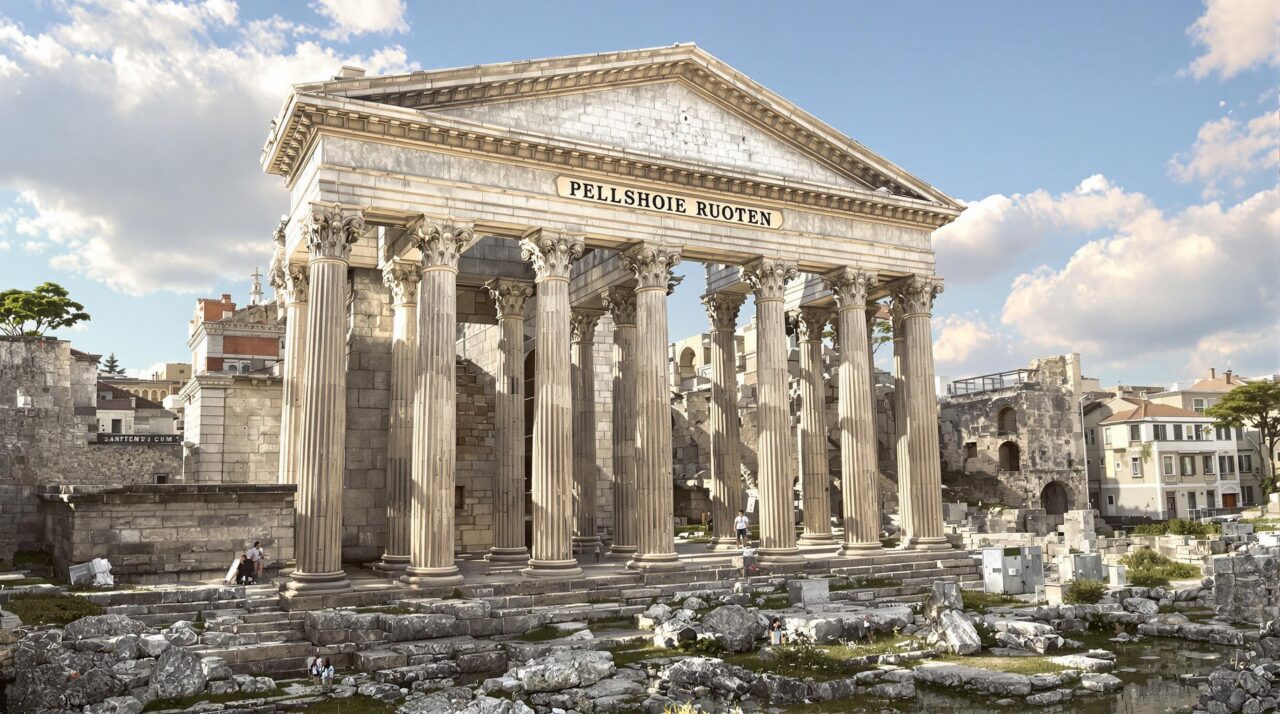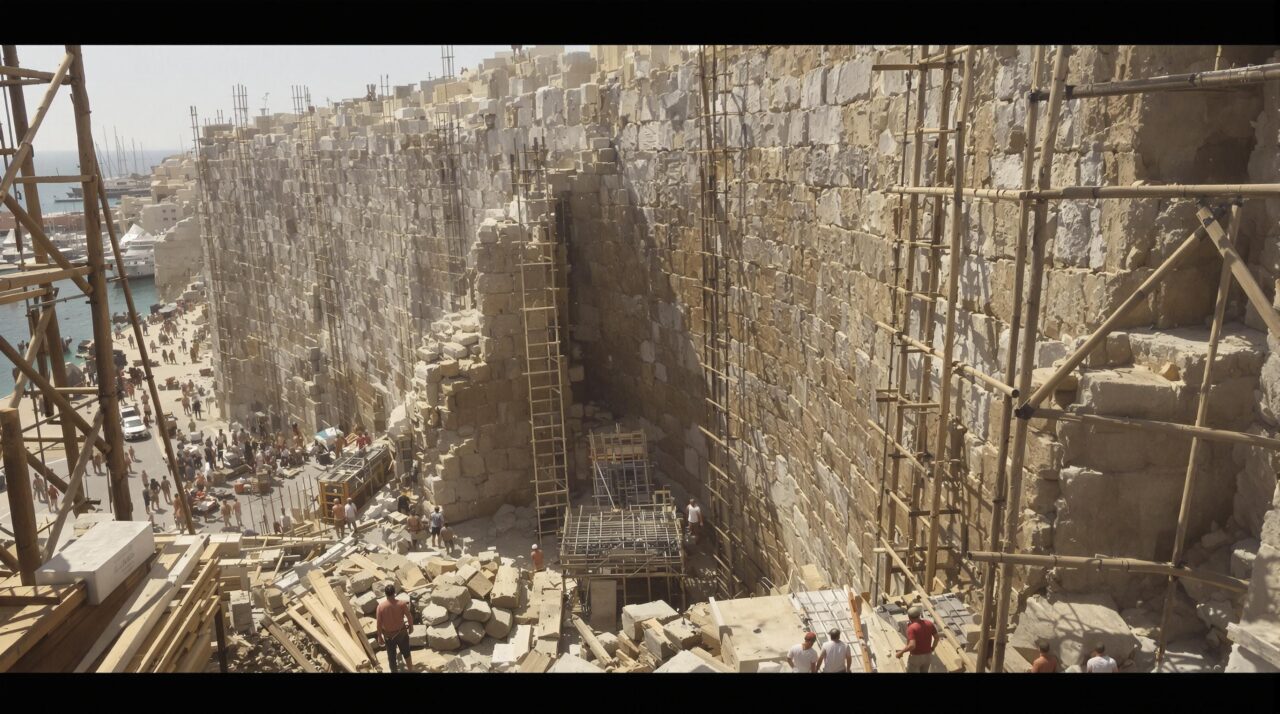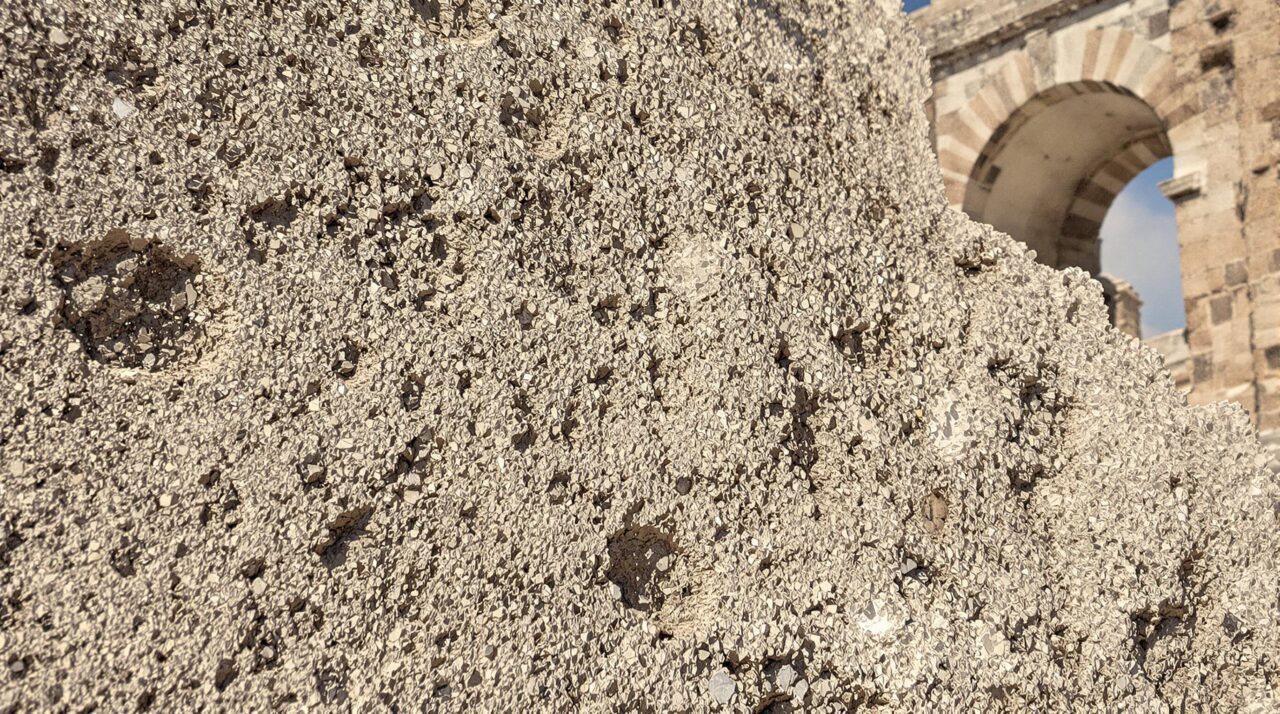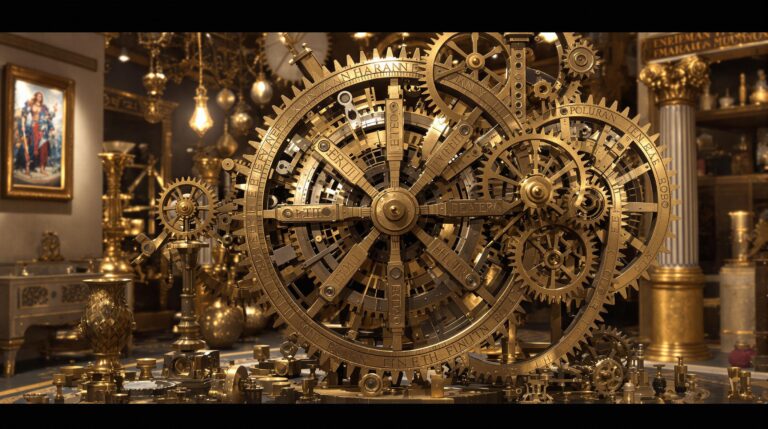Secrets Behind the Strength of Ancient Roman Concrete

The strength of ancient Roman concrete has puzzled researchers and engineers for centuries.
Its remarkable durability stems from a unique blend of volcanic ash, lime, and water.
This composition not only withstood the elements but also enhanced resilience in marine environments. What specific chemical reactions contributed to this longevity?
In addition, how do these ancient practices compare to contemporary building methods?
The answers may reveal lessons relevant to modern construction challenges.
Highlights
Hide- Roman concrete's strength comes from a unique blend of volcanic ash (pozzolana), lime, and water, enhancing durability through chemical reactions.
- The interaction of Roman concrete with saltwater environments significantly fortified structures, showcasing advanced engineering techniques.
- Structures like the Pantheon demonstrate innovative weight distribution, using coffered designs to reduce weight while maintaining structural integrity.
- Research into ancient formulas reveals potential eco-friendly applications, offering insights into sustainable construction practices for modern builders.
- The cultural significance of Roman concrete reflects the engineering ingenuity of the Roman Empire, influencing contemporary architectural designs and materials.
Origins of Roman Concrete in Antiquity

The origins of Roman concrete can be traced back to the innovative spirit of ancient builders seeking durable materials for monumental structures.
Early uses included the construction of temples and aqueducts, where the material’s unique properties offered both strength and versatility.
This exploration raises questions about the techniques and resources that led to the development of such a revolutionary building tool in antiquity.
Discovery and Early Uses
The origins of Roman concrete are intricately linked to the unique materials available in the region, particularly the volcanic ash sourced from Pozzuoli.
This ash, when combined with limestone and water, created a remarkably durable composite that revolutionized construction practices in antiquity.
Analyzing these components reveals not only the ingenuity of Roman engineering but also the environmental factors that influenced their architectural advancements.
Volcanic Ash from Pozzuoli
While exploring the remarkable properties of ancient Roman concrete, one cannot overlook the pivotal role of volcanic ash sourced from Pozzuoli.
This unique material, rich in silica and alumina, enhanced the concrete’s durability and resistance to environmental degradation.
Its incorporation into the mix is a demonstration of the Romans’ innovative use of local resources, showcasing their advanced understanding of materials in construction.
The Role of Limestone and Water
In addition to volcanic ash, limestone and water played essential roles in the composition of ancient Roman concrete.
Limestone, when heated, produced lime, which reacted with water to create a binding agent. This interaction not only enhanced durability but also allowed for innovative structures.
The precise ratio of these materials contributed considerably to the remarkable longevity of Roman engineering, inviting further exploration into their ancient practices.
Key Ingredients That Made It Resilient

The resilience of ancient Roman concrete can be largely attributed to its unique blend of ingredients, particularly pozzolana.
This volcanic ash not only enhanced the material’s durability but also introduced a complex chemical reaction that contributed to its strength over time.
Analyzing the properties of pozzolana reveals essential insights into the engineering marvels of Roman construction.
Understanding Pozzolana and Its Properties
The unique properties of pozzolana have garnered attention for their role in enhancing the resilience of Roman concrete. By facilitating chemical reactions that bond the mixture more effectively, this volcanic ash seems to have provided a significant advantage in structural integrity.
Furthermore, its interaction with saltwater environments raises intriguing questions about how such conditions may have further fortified these ancient constructions.
Chemical Reactions That Strengthen the Mixture
Exploring the remarkable durability of ancient Roman concrete reveals the pivotal role of pozzolana, a volcanic ash that transformed basic mixtures into resilient compounds.
The chemical reactions between pozzolana and lime create calcium silicate hydrates, enhancing strength and resistance.
This innovative combination not only improved structural integrity but also allowed for unique bonding properties, illustrating the ingenuity behind ancient Roman engineering practices.
Why Saltwater Environments Increased Durability
Although many modern concrete formulations struggle with degradation in marine environments, ancient Roman concrete thrived when exposed to saltwater.
This resilience stemmed from its unique composition, including pozzolana, which reacted with seawater to form compounds that enhanced strength.
The interplay between salt and volcanic ash created a robust matrix, showcasing an extraordinary adaptability that invites further exploration into ancient engineering marvels and their enduring secrets.
Notable Structures Standing for Centuries
The remarkable endurance of ancient Roman structures raises intriguing questions about their construction methods and materials.
Significantly, the Pantheon’s dome, with its unparalleled architectural design, has stood the test of time, while the Roman harbors along the Mediterranean reveal the innovative engineering that facilitated maritime trade.
What underlying principles and techniques contributed to the longevity of these iconic sites?
The Pantheon’s Dome and Its Endurance
The Pantheon’s dome stands as a testament to Roman engineering prowess, showcasing an innovative approach to constructing such a massive span.
How did ancient architects master the principles of weight distribution and support to create a structure that has endured for nearly two millennia?
An exploration of its design reveals not only the technical skill involved but also the strategic use of materials that contributed to its remarkable longevity.
Innovative Construction for a Massive Span
While many ancient structures have succumbed to the ravages of time, the Pantheon’s dome stands as a testament to Roman engineering prowess and innovative construction techniques.
This monumental archway, with its expansive span, invites curiosity. What unique methods and materials did the Romans employ to achieve this feat?
The blend of ingenuity and artistry reveals a sophisticated understanding of architecture that continues to inspire modern builders.
Mastering Weight Distribution and Support
Mastery of weight distribution and support is evident in the design of the Pantheon’s dome, a marvel that has withstood the test of time for nearly two millennia.
The ingenious use of a coffered structure reduces weight while maintaining structural integrity.
This architectural feat invites contemplation on how ancient Romans skillfully balanced aesthetics and engineering, creating a sanctuary that continues to inspire freedom of thought and design.
Roman Harbors Along the Mediterranean
The resilience of Roman harbors along the Mediterranean raises intriguing questions about their construction techniques, particularly the seawall foundations designed to withstand relentless erosion.
What materials and methods did the Romans employ to guarantee these structures not only endured but thrived through centuries of maritime activity?
Analyzing these ancient marine constructions reveals valuable lessons that could inform modern engineering practices.
Seawall Foundations Holding Firm Against Erosion
Amidst the relentless forces of nature, ancient Roman seawalls stand as a tribute to engineering ingenuity, their foundations resisting erosion for centuries.
Constructed with a unique blend of volcanic ash and lime, these structures demonstrated an understanding of marine environments.
How did such materials contribute to their longevity?
The resilience of these foundations invites curiosity about their techniques and the principles of sustainable construction.
Lessons Drawn from Ancient Marine Construction
Numerous ancient Roman harbors along the Mediterranean offer invaluable insights into the principles of marine construction that have withstood the test of time.
These structures, with their innovative use of concrete and strategic designs, reveal a deep understanding of hydrodynamics.
Transition to Modern Cement and Its Differences
The evolution from ancient Roman concrete to modern cement reflects a significant shift in construction methods and materials.
Researchers are increasingly investigating the unique properties of ancient formulations, seeking to reveal their durability and resilience.
This inquiry raises questions about how modern practices could benefit from the lessons of history.
Shift from Traditional Methods
The shift from ancient Roman concrete to modern cement marks a significant evolution in construction materials and methods.
The emergence of Portland cement introduced industrialized processes that transformed the way structures were built, emphasizing efficiency and consistency.
How do these advancements compare to the artisanal techniques of Roman engineers, and what implications do they hold for contemporary architecture?
The Emergence of Portland Cement
As the quest for stronger and more durable building materials intensified, the development of Portland cement marked a pivotal shift in construction practices during the early 19th century.
This innovation introduced a uniform, reliable binder that contrasted sharply with traditional methods. Its composition, primarily limestone and clay, allowed for greater versatility and durability in structures, raising questions about the future of architectural resilience and sustainability.
Industrialized Processes After the Roman Era
While the invention of Portland cement in the early 19th century revolutionized construction, it also marked a significant departure from the traditional methods employed by the Romans.
This shift introduced mass production techniques and standardized materials, prioritizing efficiency over the artisanal craftsmanship of ancient concrete.
Consequently, the unique properties of Roman concrete, such as resilience and adaptability, became overshadowed by the uniformity of industrialized processes.
Modern Research into Ancient Formulas
Recent studies on ancient Roman concrete have sparked interest in experimental replications and lab testing to uncover its unique properties.
Researchers are not only fascinated by the durability of these historical mixtures but are also exploring their potential as eco-friendly building solutions in modern construction.
This intersection of ancient knowledge and contemporary innovation raises questions about how these age-old materials can inform sustainable practices today.
Experimental Replications and Lab Testing
Researchers have commenced on an intriguing journey to unravel the mysteries of ancient Roman concrete through experimental replications and lab testing.
By meticulously analyzing the unique mixtures and curing processes, these scientists seek to identify the superior qualities of this ancient material.
Their findings may challenge modern assumptions about concrete durability, offering insights into the underlying chemistry that has long captivated the construction industry.
Potential for Eco-Friendly Building Solutions
Releasing the potential of ancient Roman concrete could pave the way for eco-friendly building solutions that align with modern sustainability goals.
Researchers are analyzing the unique composition of this durable material, which utilized volcanic ash and lime, to reduce carbon emissions associated with contemporary cement.
Cultural Significance and Lasting Influence
Ancient Roman concrete stands as a demonstration to the engineering prowess of its time, symbolizing the innovative spirit that propelled the empire’s architectural marvels.
Its enduring durability invites reflection on the materials and methods employed by modern builders, raising questions about how these ancient techniques could inform contemporary construction practices.
As the legacy of Roman concrete continues to influence design and sustainability, one must consider the broader implications of this ancient technology in today’s world.
Symbol of Roman Engineering Skill
The ancient Roman concrete stands as a demonstration to the ambitious spirit of an empire that sought to leave a lasting legacy through monumental architecture.
These emblematic structures not only defined the cultural heritage of Rome but also showcased the innovative engineering skills that allowed such grand designs to endure through centuries.
How did these concrete marvels influence subsequent architectural practices, and what do they reveal about the values and aspirations of Roman society?
Reflecting the Ambition of an Empire
While exploring the remarkable achievements of the Roman Empire, one cannot overlook the profound cultural significance of Roman concrete, which stands as a demonstration of the civilization’s engineering prowess.
This innovative material reflects the ambition of an empire that prioritized durability and grandeur, enabling the construction of monumental structures.
Such ingenuity not only symbolized power but also influenced future architectural practices across centuries.
Emblematic Structures Defining Heritage
Roman concrete not only facilitated the construction of impressive structures but also became a hallmark of the empire’s architectural legacy.
These emblematic edifices, symbols of ingenuity, continue to captivate the modern world with their enduring presence:
- The grandeur of the Colosseum
- The resilience of the Pantheon
- The engineering marvel of aqueducts
- The splendor of ancient temples
Each structure narrates the story of Roman excellence.
Relevance for Today’s Builders
The ancient Roman approach to concrete, known for its durability and sustainability, presents a compelling case for contemporary builders seeking environmentally conscious materials.
How might the principles embedded in Roman construction influence modern sustainable design projects?
In addition, the interest from environmental scientists in these ancient techniques underscores their potential to inform current practices in reducing ecological footprints.
Inspiration for Sustainable Design Projects
As ancient civilizations often reveal profound insights into contemporary challenges, the remarkable durability of Roman concrete serves as a poignant reminder of sustainable building practices.
This legacy inspires modern architects to:
- Utilize local materials
- Embrace low-energy production techniques
- Integrate resilience against environmental stresses
- Foster community engagement in design processes
Such principles may ignite a renaissance of sustainable architecture, bridging past wisdom with future possibilities.
Interest from Environmental Scientists
While exploring the enduring qualities of ancient Roman concrete, environmental scientists are increasingly drawn to its remarkable properties and the implications for modern construction.
This ancient material’s durability and ecological advantages challenge contemporary practices, prompting inquiries into its composition and longevity.
As scientists seek sustainable alternatives, the wisdom of Roman engineering may illuminate pathways toward reducing carbon footprints and enhancing resilience in future architectural endeavors.
Wrapping Up
In contemplating the enduring legacy of ancient Roman concrete, one is reminded of the Colosseum’s grandeur and the Pantheon’s resilient dome, timeless symbols of engineering prowess. As modern builders grapple with sustainability, the echoes of pozzolana and limestone whisper lessons from antiquity. Can these ancient secrets, forged in the crucible of time, guide contemporary practices towards a more durable future? The strength of Roman concrete invites a deeper exploration of our relationship with materials and the environment, urging innovation rooted in history.
